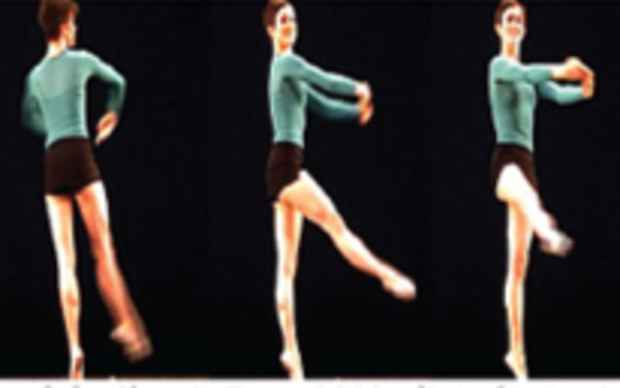Joshua Spodek "Motion in Stillness"
Crossing Art

This event has ended.
Crossing Art presents Joshua Spodek: Motion in Stillness a solo exhibition of the artist’s linear zoetropes; a unique medium that transforms still images to appear animated to moving viewers. Joshua Spodek: Motion in Stillness will be the largest solo exhibition of linear zoetropes to date. Following the opening, in fall 2011 Spodek, in conjunction with 18 art students and 2 professors from Parsons The New School of Design's Art, Media, and Technology (AMT), will unveil the largest, digital linear zoetrope to date in Union Square.
The first example of an elementary zoetrope is believed to have been invented in China by Ding Huan around 180 AD. Since then, the zoetrope has taken on many forms from its beginnings as a spinning cylindrical mechanism to the static linear zoetrope model that Spodek employs today. Spodek’s linear zoetropes are derived from a technology for producing printed images that he developed and patented (Spodek et al, Apparatus for displaying images to viewers in motion, US Patents 6,564,486 B1, 6,718,666, and 6,731,370) in 1998. Since their inception, Spodek’s linear zoetropes have been presented in public transit systems around the world and continue to be installed for both commercial and artistic purposes.
Spodek’s fascination with zoetropes began while attending graduate school in 1996. He began exploring if the zoetrope would work if it was straight instead of circular. Moving a display past a viewer seemed impractical, but moving viewers past a display would work which led him to subways (a system that moved people past tunnel walls on a regular basis). Spodek learned the basic principles of animation and projection while he developed the correct theory and practice by deriving the math and design for testing many models of linear zoetropes. His first public linear zoetrope debuted in September 2001 in a tunnel of the Atlanta subway system with a 300 meter long display that was internally lit. His design soon appeared in subway systems elsewhere in North America, Asia, and Europe. The first large public linear zoetrope to appear in New York was Bill Brand's Masstransiscope in 1980, installed in the Myrtle Avenue subway station in Brooklyn. Since Brand’s work appeared, it wasn’t until Spodek developed technology to display digitized images or photographs for the linear zoetrope that an installation of this kind appeared again in New York City or anywhere. Spodek has been heralded with leading the development of a class of linear zoetropes that saw the first commercial success of a zoetrope in over a century.
Now working on a smaller, more intimate scale, outside the commercial realm, Spodek explores the transcendental implications of this medium. His work exposes new juxtapositions to the still and moving image, requiring the viewer to focus on momentary actions and movements often overlooked or missed. With the increasing speed in which the world runs today, time seems to disappear before our eyes. Spodek’s work poetically unveils this time acceleration paradigm by capturing the motion in stillness.
Joshua Spodek lives and works in New York, NY. He received a PhD in Astrophysics from Columbia Graduate School of Arts and Sciences in 1999 and an MBA from Columbia Business School in 2006. In 2003, Spodek was named the “Best and Brightest” in Esquire Magazine’s Genius Issue. His work has been reviewed in notable international publications including the New York Times, Forbes magazine and CNN.
Media
Schedule
from June 18, 2011 to July 17, 2011
Closing Reception on 2011-07-14 from 18:30 to 21:00
With a presentation and discussion.